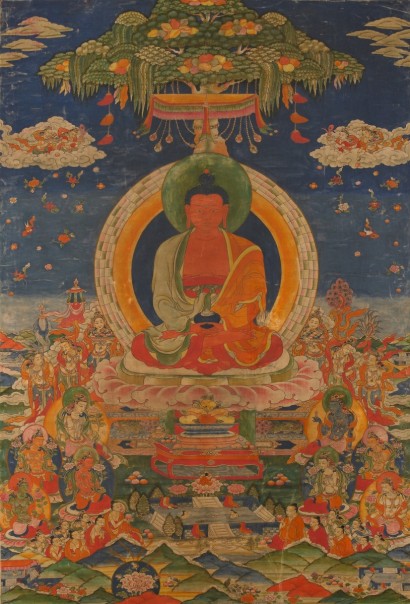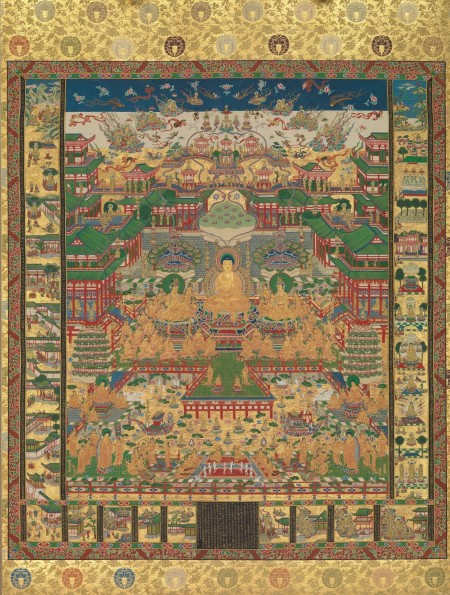Central Tibet, 19th century; pigment on cloth; 38 1/2 x 25 1/2 in.; The Rubin Museum of Art, New York, F1997.6.3.
Taima Mandala
Japan, Edo period, 1750; hanging scroll, ink, color, and gold on silk; 41 13/16 x 37 1/16 in.; The Metropolitan Museum of Art, Charles Stewart Smith Collection, Gift of Mrs. Charles Stewart Smith, Charles Stewart Smith Jr., and Howard Caswell Smith, in memory of Charles Stewart Smith, 1914, 14.76.54, photo: www.metmuseum.org.
Based on a Chinese tapestry that came to Japan in the 8th or 9th century (known as the Taima Mandala), the iconography seen here became very popular in that country, and many versions of it were made. As in the Tibetan painting, Avalokiteshvara (Guanyin in China; Kannon in Japan) appears as one of Amitabha’s attendants, although he is placed to the Buddha’s left instead of his right. The bodhisattva also manifests in other places throughout the depiction. On the lower register of the Outer Courts, we see Avalokiteshvara greeting recently deceased devotees who will be reborn in Amitabha’s Pure Land. The bodhisattva also imparts wisdom to those in Sukhavati, accelerating their evolution to buddhahood.





